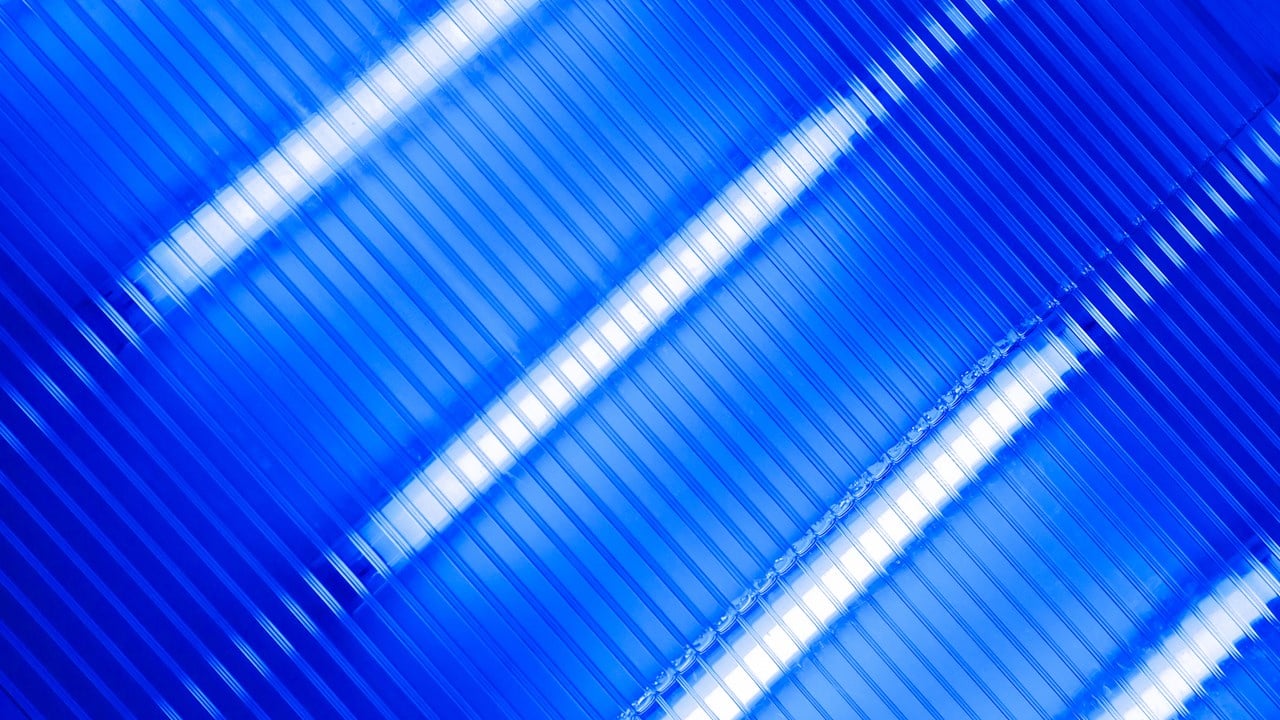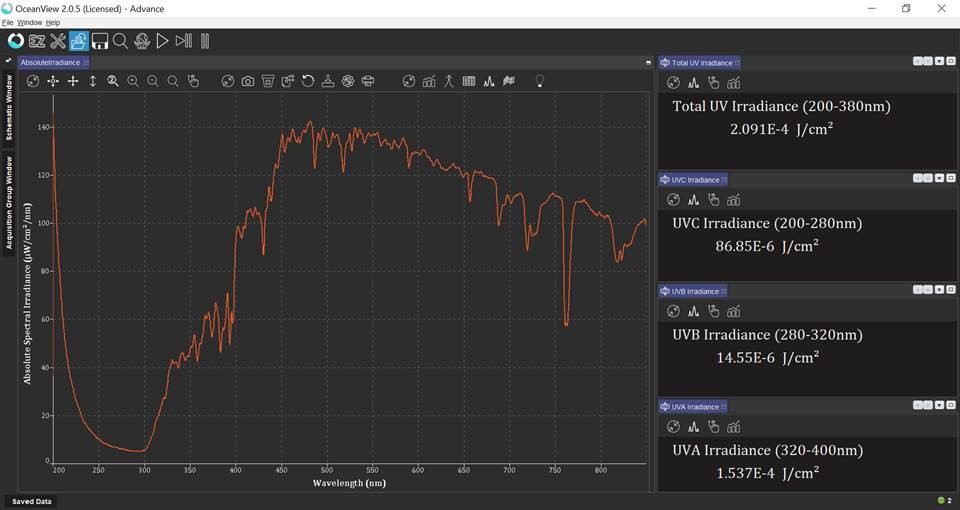Subscribe to Our Blog
Receive updates from our team as we share application notes, customer spotlights, educational tools, spectroscopy how-to’s, and more.

The use of ultraviolet (UV) light is growing in popularity. When applied appropriately, UV light is a powerful disinfectant tool to decontaminate surfaces, rooms, products and water.
Spectroscopy enables us to probe materials and environments in a variety of different ways. Different techniques can be used depending on the application. For UV light characterization, an irradiance method is employed.
Irradiance is the amount of energy emitted at each wavelength from a radiant sample, which in this case would be the UV lamp. From the data gathered, intensity values can be calculated.
To be considered in the UV range, the light emitted will have to be between 100-400 nm. UV light can then be divided into additional segments – UVA (315-400 nm), UVB (280-315 nm) and UVC (200-280 nm). Each type of UV light may be used for different applications, but UVC light is typically required for disinfection.
UV light has recently been applied to disinfect the personal protective equipment (PPE) used by doctors and nurses in the global effort to protect against COVID-19.
However, to ensure complete disinfection, it is highly important that the required UV dose is delivered. The dose is determined by the light intensity and the duration of exposure to the light.
Because each lamp will vary in intensity, it's important to accurately measure UV lamp power to ensure that the correct wavelengths are emitted and that treatment time is adjusted to the required dose. Ocean Optics provides a range of optical sensing solutions and applied spectral knowledge to offer spectrometer systems that detail the spectral profile of UV lamps.
To measure absolute irradiance requires a calibration using a source with a known power output. A spectrum is measured with the sampling optic connected to the calibration light source and is then compared to the known output power of the calibration light source.
This process generates a file with energy response data for each pixel. Factoring in the surface area of the sampling optic and the integration time allows irradiance measurements in μW/cm2 to be reported (power=energy/time).
We provide multiple options to characterize UV light. The appropriate setup will depend on the individual and what is most important to them.
Next-generation ST microspectrometers deliver excellent spectral performance in a compact footprint.
SR and HR series spectrometers deliver varying combinations of high resolution, high speed spectral acquisition and excellent SNR performance to meet your application needs.
OceanView 2.0 software offers a customized schematic view that displays both spectral data and written wavelength ranges. This example was produced using a radiometrically calibrated spectrometer with the CC-3-DA cosine corrector. It displays the solar spectrum as captured in Tampa, Florida USA.
Note: OceanView 2.0 requires customization to reach this display. Instructions on how to do so are provided with purchase.

OceanView provides power values over a specified wavelength range in µJoule/cm2, µJoule, µWatt/cm2 and µWatt. However, if required, schematic customization can enable you to convert these units to other values.
Ocean Optics and a leading U.S. pediatric hospital have teamed to monitor the output of UV disinfection lamps that extend the life of critical personal protective equipment (PPE)
UV sterilization techniques can extend the life of high-demand personal protective equipment (PPE). But does your UV lamp provide enough power to disinfect face masks safely?

Receive updates from our team as we share application notes, customer spotlights, educational tools, spectroscopy how-to’s, and more.